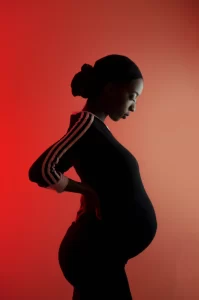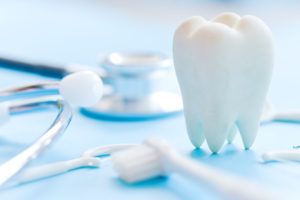By Iris Farrou
01 Sep, 2023
Lifestyle Tips, Menopause, New Moms, Peri-Menopause, Peri-Menopause, Postpartum, Prevention, Women's Health
abdominal, Childbirth, constipation, dysfunction, floor, obesity, Pain, painful sex, pelvic, Physical Therapy, pilates, Pregnancy, pregnant, PT, tailbone, weakened pelvic floor, Why is sex painful

When we hear about pelvic floor exercises, we often associate them with either older women, or pregnant women/women who have just given birth. This is a common misconception–older women and new mothers may see immediate benefits when engaging in pelvic floor PT, but everyone can benefit from it.
No matter your age or overall physical health, if you were assigned female at birth, knowledge is power when it comes to knowing what your pelvic floor looks like, and what it does:
- Imagine your pelvic floor as a hammock of support consisting of muscles, tendons, ligaments, nerves, and connective tissue. This hammock is between the tailbone and the pubic bone.
- First and foremost, your pelvic floor supports the bowels, bladder, uterus, and vagina; there are also muscular bands that pass through the pelvic floor that encircle the urethra, vagina and anus.
- All this, when it functions properly, plays a key role in bowel and bladder control. Your pelvic floor also helps you stabilize your pelvis and your spine, and assists with sexual function.
Who is at risk of Pelvic Floor Dysfunction?
Remember that the pelvic floor is mostly made up of muscles, and like any muscles in our body those–too–can weaken or suffer damage and lead to pelvic floor dysfunction. People who have experienced pregnancy, childbirth, chronic constipation, or obesity may be at higher risk as their pelvic floor has, and does, work harder to support their normal bodily functions and the bowels/bladder.
Some of the symptoms of pelvic floor dysfunction may include pain during intercourse, bladder pain, bowel or urinary incontinence, frequent urination, persisting pubic, tailbone, or lower abdominal pain, and constipation–to name a few. More serious issues may include pelvic organ prolapse: bowel prolapse, prolapsed uterus, and even endometriosis.
How can Physical Therapy Help?
Physical therapists are not just experts who help you walk better after an injury, they are medical experts in the functions of muscles, joints, and nerves, and have an in-depth and holistic understanding of human health. Just like any medical field, PTs have areas of expertise and you may want to work with someone who is trained on pelvic floor functions.
A PT will assess your whole body after consulting with you, not just the problem or painful areas. Your medical history, symptoms, and needs will of course be taken into account to create an individualized plan for your pelvic floor health. The exercises will, and should, be done with the physical therapist–unless they assign you specific exercises to do at home. Since our pelvic floor is basically holding everything in our body together, the center so to speak, don’t be surprised if some exercises are not directly working on the pelvic area; ask your PT to explain why they are assigning you an exercise, and how it will help you. Some soreness or aches are normal after your PT sessions, but this is not a “no pain, no gain” situation: at no point during PT should you feel acute pain or strain on your muscles/ligaments.
And for this subject, the saying “the sooner, the better” cannot be emphasized enough: do not wait until you’re older, pregnant, or have any painful symptoms to get started on strengthening your pelvic floor.
More
By Iris Farrou
15 Aug, 2023
Diet & Exercise, Health Conditions and Pregnancy, Heart health, Lifestyle Tips, New Moms, Parenting, Pregnancy, Prevention, Women's Health, Your baby's health
Can I use antiperspirant while pregnant, Dehydration prevention, Diet during hot summer, Dizziness, Effects of overheating on pregnancy, Exercise During Pregnancy, Fainting Prevention, high temperatures, Hot Flashes during Pregnancy, How to stay hydrated while pregnant, Overheated, Overheating while Pregnant, Pregnancy, pregnant, Protecting my baby in the heat, Regulate Body Temperature

In some parts of the country the weather is starting to cool down at this time of year, but there are still areas being affected by heatwaves. Even if you’re not in the Midwest, the South, or any other part of the US where heat persists well into September, keep in mind that bigger cities suffer higher temperatures regardless. When you’re pregnant, you have an increased amount of blood in your body, which can make you feel hotter all the time. If you combine that with the summer heat, things can get really uncomfortable…
It’s a good idea to always be aware of the risks that come with a summer pregnancy:
- You are more likely to become overheated, and suffer from dizziness, nausea, headaches, or even muscle cramps.
- With that being said, keep in mind that the chances of fainting, or losing your step and falling, are higher: this could result in a more serious injury and endanger your baby’s health–even bringing on early labor or placental abruption.
- Dehydration is one of the risks associated with overheating. If your temperature is consistently above 101 degrees, you should be seeing your doctor. High fever– especially in the first trimester–has been shown to impact fetal development, particularly the fetal heart structure and neural tube defects.
- If you work outdoors, if your job requires manual labor, if you are working in a building that’s not climate controlled, or if you work in a commercial kitchen, you should know you are at higher risk of overheating while pregnant.
Though being pregnant is not the same experience for everyone, and not all people have the same advantages, opportunities, and support from family and friends during their term, the following steps are recommended so as to keep you and your baby safe:
- Since you are liable to overheat when pregnant, try to stay out of the heat as much as possible–especially if the outside temperature is higher than 90 degrees.
- Know that if your body temperature is higher than 102 degrees for more than 10 minutes, that puts you at a higher risk for heatstroke.
- Swelling and pregnancy go hand in hand, and in the summer heat this may get worse. Try to elevate your feet as much as you can, and stretch often. If you can, avoid standing for long periods of time.
- Your body is working for two, so with a higher blood volume, you will be sweating more. That’s your body trying to keep you cool: drink lots of water to avoid dehydration, and try to wear clothes that allow heat to escape.
- Underarm antiperspirant is not your friend: you need to allow your body to regulate its temperature, so you don’t want to trap heat in you. Try to wear light, breathable fabrics that help you cool down, and always use sunscreen to protect your skin from overheating.
- If you are exercising, it is best to stay inside and use AC– it is the best thing you can do for your safety to be in climate controlled environments, drink as much water as possible, and cool down every chance you get.
- Avoid the sun, avoid high sodium foods, and avoid all other drinks but water: non-alcoholic cocktails or other drinks have sugar and other ingredients that are not helping your cause. Water should be your beverage of choice.
Always trust your instincts when it comes to how you are feeling, and always listen to your body: even if the environment is seemingly cool and safe, if you feel that something is not right, follow your gut and seek medical attention.
https://www.heart.org/en/news/2019/07/01/summer-heat-brings-special-health-risks-for-pregnant-women
https://www.cdc.gov/niosh/topics/repro/heat.html
https://www.unitypoint.org/news-and-articles/10-things-no-one-expects-during-a-summer-pregnancy
More
By Iris Farrou
16 Jun, 2023
Diet & Exercise, Health Conditions and Pregnancy, Lifestyle Tips, Nutrition, Pregnancy, Prevention, Queer Health, Women's Health
Acid Reflux During Pregnancy, Besides Tums, Digestion, Digestive Issues, Esophagus, GERD, Health Conditions while Pregnant, Heartburn, How to cure heartburn while pregnant, OTC Medication for Heartburn, Pregnancy, Pregnancy Heartburn Prevention, Preventing stomach issues, Safe Heartburn Medication, Too much calcium, What foods trigger heartburn, What stops heartburn

A large number of pregnant people experience heartburn during pregnancy, and the logical next step is to see treatment for acid reflux. There is, however, a slight difference between the two terms that may help you differentiate: acid reflux refers to the lower esophageal sphincter (LES) not tightening as it should, which allows the stomach acid to travel up to your esophagus.
Heartburn is a symptom of acid reflux, and it is often experienced as a feeling of burning or pain in your chest. During pregnancy, not only is your body changing to accommodate your baby, pushing all your gastrointestinal organs together and upwards, but your hormone levels also change and affect how you digest food.
How can it be prevented?
First things first, note that more than half of pregnant women report having heartburn in the third trimester. This is more common in women who have been pregnant before, or have experienced heartburn or dealt with acid reflux conditions before pregnancy.
Lifestyle Changes would be the first suggested method of helping you prevent heartburn during your pregnancy. One suggestion is to wear loose clothing as much as possible to avoid further constrictions on your body. You should also avoid lying down within 3 hours after a meal, and if that is not possible, make sure that your head is elevated–which can also help throughout the night as well. Additionally, lying on the left side of the body to sleep or rest has been shown to assist digestion much faster, and thus lessen the feeling of heartburn.
Eating Habits may be another element to address while pregnant. It is advised to eat smaller meals throughout the day instead of 3 big ones so that your body has more time to process the food and digest easily. Eat slowly for the same reasons, and avoid consuming fluids with your meals– instead, consume fluids in between your meals. Sitting up straight when you eat can also be of great help, as well as not eating a big meal late at night/before you sleep. Cravings may not be avoided, but do your best to pace your intake of food and respect the new–perhaps slower and more sensitive–process of your digestive system.
What are safe medications?
Most pregnant people turn to Tums as a safe medication for heartburn during pregnancy. Tums is a typical antacid with a combination of calcium, magnesium, and aluminum salts that help neutralize stomach acid. Pay attention to the dose, however, as a pregnant person should not be taking more than 1000 mg of elemental calcium per day. Additionally, when pregnant, you should avoid long term use of medications that contain magnesium trisilicate.
Your doctor may suggest other medications, specifically a medication that blocks the stomach acid from traveling up to the esophagus and contains sucralfate. A tried and true method is also to avoid citrus foods, spicy foods and caffeine, and increase how much yogurt, milk, and probiotics you take.
https://www.medicalnewstoday.com/articles/what-can-i-take-for-heartburn-while-pregnant-besides-tums#safe-medications
https://my.clevelandclinic.org/health/diseases/12011-heartburn-during-pregnancy#prevention
More
By Iris Farrou
26 May, 2023
Diet & Exercise, Lifestyle Tips, New Moms, Pregnancy, Prevention
Body While Pregnant, Healthy Body during Pregnancy, Healthy Skin During Pregnancy, How to Prevent Stretch Marks, Physical Changes During Pregnancy, Pregnancy, pregnant, Prevention, Skin Elasticity, Stop Stretch Marks, Stretch Marks, Vitamins for Pregnant Women

We often associate stretch marks with pregnancy, and for many women they are an extra cause for concern; our bodies change a lot during pregnancy, and new mothers are in a quest to re-discover themselves after giving birth. Visible changes on the body can be an aspect of pregnancy that many women want to prevent or treat, and stretch marks are on the front lines of self-esteem.
Though pregnancy and stretch marks may go together, these lines can appear on our skin due to weight fluctuations or bodybuilding as well–especially if our skin rapidly stretches or shrinks. They are most often seen on the stomach, thighs and hips, breasts and upper arms, as well as lower back and buttocks. Stretch marks are very common, especially among pregnant people to a 50-90%.
How do they happen?
We know that weight fluctuations can lead to stretch marks, and you may be familiar with their red or pink hues. Lots of people also experience irritation or itchiness where stretch marks are forming, and do notice they appear as sunken lines on the skin. If our skin rapidly stretches or shrinks, the elastin and collagen in it breaks. Elastin has the role of allowing our skin to stretch, and collagen’s role is to provide structure and support for our skin. As our skin heals after weight or muscle changes, stretch marks usually appear where elastin breaks.
Can they be prevented?
Especially during pregnancy, you want to ensure that your skin maintains its maximum elasticity in order to prevent stretch marks; you need to keep it supple and well hydrated.
- Enrich your “skin food” by supplementing elastin and collagen. Eat foods rich in Vitamins E, C, B2, B3, as well as rich in zinc and silica. Consume at least 2 liters of water a day to keep your skin strong and help it renew.
- Use topically applied products to help your skin’s elasticity. Bio-oil is a great first step from the first trimester to help your skin remain well-hydrated.
- You can also exercise, if your health allows it, to improve circulation that will keep your skin elastic and more able to stretch as it grows. Improved circulation will also help lessen the possibility of varicose veins and swollen ankles during pregnancy.
Other methods
During pregnancy you should be careful to use products that will not harm your baby, and focus on natural means of improving your skin’s elasticity. Beyond pregnancy, or if you are interested in diminishing stretch marks caused by other reasons, you can turn to some of the following treatment options: use of retinol creams, microneedling, dermabrasion, and laser skin resurfacing.
https://americanpregnancy.org/healthy-pregnancy/pregnancy-concerns/prevent-pregnancy-stretchmarks/
https://my.clevelandclinic.org/health/articles/10785-stretch-marks
More
By Iris Farrou
13 Jan, 2023
Fatherhood, Lifestyle Tips, New Moms, Parenting, Pregnancy, Your baby's health
New Parents, Pregnancy, Prenatal, prenatal classes, Prenatal Education, Support

A vast number of expecting parents choose to educate themselves on issues of pregnancy, delivery, and caring for a newborn. Though documentaries and books are very helpful, birthing education classes are also a popular choice among prospective parents, or returning parents. Many couples find this to be a bonding experience, as both parties become educated on matters of prenatal care, delivery, and postpartum care. Additionally, it helps build a community–and even friendships–as concerns are shared among other expectant parents. Most importantly, you can share questions, concerns and fears in a safe and well informed environment with an experienced instructor by your side and become more and more confident in your body’s ability to give birth.
To start off, there are two types of classes: hospital-based ones and ones outside the hospital. In both cases, your instructor will discuss pain relief options, breathing techniques and medications, and even show you some supportive massage techniques. Emotional aspects, coping and relaxation skills, as well as the physiology of labor and birth are also topics covered in off-hospital birthing classes. Those are often the spaces where you discuss the different childbirth options.
If you opt for a hospital birth, and are taking a prenatal class located in a hospital, you will most likely receive a basic overview of labor and birth practices specific to the hospital of your choice. Additionally, you will get the chance to tour the facilities and see the staff in action and ask questions regarding routine practices–such as freedom of movement during labor.
However, even if you are starting from zero and have no idea about what method of childbirth you want to follow, how to construct a birth plan, what are the best practices that work for you during pregnancy and labor, it is important to consider some credible elements when choosing a birthing class:
- Make sure the instructor is certified to teach childbirth classes
- Consider whether the class’s philosophy suits you
- What are the topics covered in the curriculum and what is the cost of the class
- What is the extent of partner participation and education
- How many couples are in the class and how often does it take place
- Does the class focus on one birthing philosophy or multiple? How well rounded and open minded is the curriculum and the instructor?
You may locate credible birthing classes through your physician or hospital, family and friends, pregnancy centers, as well as community resource centers. Two Buffalo-based options include Buffalo Birth & Baby that covers a variety of areas, and offers support through all the pregnancy, delivery, and postpartum stages–and even offers online classes! Buffalo Doula Services offers not only educational materials and classes, but also hands-on support with widely experienced doulas to fit each family’s needs.
https://americanpregnancy.org/healthy-pregnancy/labor-and-birth/childbirth-education-classes/
https://buffalobirthandbaby.com/
https://www.buffalodoulaservices.com/
More
By Iris Farrou
05 Aug, 2022
Health Conditions and Pregnancy, Lifestyle Tips, Pregnancy, Prevention, Reproductive health, Uncategorized
Autoimmune, Common pregnancy complications, Disease Modifying Therapy, DMTs, Healthy Pregnancy with MS, MS, Multiple Sclerosis, Pregnancy
What is it?
Multiple Sclerosis (MS) is an autoimmune disease that affects the central nervous system, mainly
the brain and the spinal cord. Like most autoimmune conditions, research remains inconclusive
on what causes it, other than: antibodies attack healthy tissue. In MS, your body attacks the
myelin sheath: the wiring protecting your nerve cells. This damage causes messages from your
brain to the rest of your body to slow down, or completely stop. Most common treatment for MS
is a Disease Modifying Therapy (DMT), tailored to the patient’s needs and the severity of the
condition.

DMTs and Pregnancy
Women who have been diagnosed with MS and are thinking of becoming pregnant have likely
been told that most DMTs are not safe to use during pregnancy. One of the most common
concerns with stopping DMTs is the risk of relapse after pregnancy. In fact, medical
professionals suggest you stop the therapy altogether once you embark on your pregnancy
journey.
Another research, however, has found that 12% of its women participants were taking a
DMT during the first trimester. This lowered to 3% of participants by the third trimester. This is
not to say that use of DMTs during pregnancy is safe, but it does point to the need for further
research.
What should I expect?
It’s common that during pregnancy most autoimmune diseases—including MS—quiet down:
you may not experience as many symptoms, or your symptoms may lessen. Researchers believe
this is due to the hormones your body produces during pregnancy.
There is no evidence MS causes any miscarriages, stillbirths, or congenital malfunctions. Some
research suggests that premature labor and the risk of infections have been found to be slightly
higher in women with MS. Your doctor may suggest closer monitoring of your pregnancy, more
prenatal visits, and further tests to ensure your health. It’s possible you may need to consider a
C-section, especially if your MS symptoms affect your pelvic muscles and nerves.
What about relapse?
Research has found that the risk of relapse is relatively low during pregnancy. However, it can be
treated with corticosteroids which are generally known to be safe during the first and second
trimester.
After giving birth, studies have found an increased chance of relapse in the first three months. A
significant factor is the stability of the disease prior to pregnancy, and it is used to reduce this
risk. Similar to use of corticosteroids, if you are thinking of breastfeeding, remember that DMTs
can also pass through breastmilk—their use is not recommended if you will be breastfeeding.
More
 If you are worried that dental work during pregnancy negatively affects the fetus, remember it is exactly the opposite! Dental care before and during pregnancy actually guarantees both your and your baby’s well-being. Hormonal changes that occur during pregnancy cause the gums to swell and bleed, which may lead to trapped food causing increased irritation to your gums while also increasing the risk of gum infections.
If you are worried that dental work during pregnancy negatively affects the fetus, remember it is exactly the opposite! Dental care before and during pregnancy actually guarantees both your and your baby’s well-being. Hormonal changes that occur during pregnancy cause the gums to swell and bleed, which may lead to trapped food causing increased irritation to your gums while also increasing the risk of gum infections.
What is safe to do?
All emergency and regular dental treatments by family dentistry such as cavity fillings, crowns, root canals, tooth extractions, and dental cleanings can be done during pregnancy. It is recommended to complete such dental work, as well as have regular check-ups, since it helps reduce the risk of infections and gum disease. You can see here to get to a dentist to have your teeth checked and more.
Dental work will be easier to do during the second trimester, as the first trimester is the most critical in the development of the fetus and it may be challenging to lay on your back for an extended period of time once in the third trimester. You can get dental implants after your first trimester. However, it is better to wait until delivery. If you need to get them, take expert advice from Cutting Edge Periodontist providing all on 4 dental implants. Make sure that you know everything about it to avoid complications.
Cosmetic procedures such as teeth whitening and elective treatments should be postponed until after the baby has been born to avoid exposure to any risks. You can avail the best cosmetic dentistry at Eccella Smiles post-delivery.
Morning sickness and rising hormone levels put you at risk for periodontal disease and tender gums—also called pregnancy gingivitis. Follow regular oral hygiene procedures, but you may want to consider using flavor-free toothpaste and/or mouth rinse. Expert advice like what you will find out here regarding the right dental products can help. You can rinse out your mouth with just water if you have frequent vomiting. Consult your dentist for suggested brands of toothpaste, mouth rinse, and other products.
Anesthesia, Medications, and X-rays
Lidocaine is most commonly used to induce anesthesia during dental work. Though it does cross the placenta once administered, studies have not yet suggested definite adverse effects. The anesthesia you receive should be as little as possible, but it is most important for you and your baby to be stress-free and comfortable.
Antibiotics that may be prescribed during dental work to avoid infections, such as penicillin, amoxicillin, and clindamycin, have not been proven as posing a risk to the fetus.
Most x-rays used in dental diagnoses do not have a radiation level high enough to cause any problems; your dentist should take appropriate care to shield your abdomen and thyroid.
More







